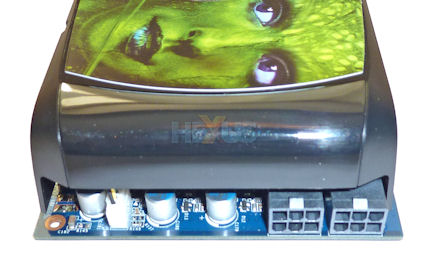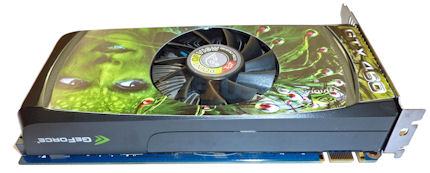The fastest-frequency GTX 460 we've reviewed
Starting off this review with one too many metaphors, steering the good graphics ship back in the right direction, NVIDIA cut through the choppy Fermi seas with the well-received GeForce GTX 460 cards.Available in two distinct flavours - 768MB and 1,024MB GPUs - and starting off at £145, the mid-range GTX 460's potential is truly realised by heavily pre-overclocked models. Our previous reviews have shown that the king of the GTX 460 hill is the KFA GTX 460 1GB LTD OC, shipping with frequencies of 810MHz core and 4,000MHz memory.
Mine is faster than yours
Now in a case in an obvious case of competitor-envy and a healthy dose of one-upmanship, Point of View has rolled out a faster-frequency GTX 460. Without further ado, ladies and gentlemen, let's cast our collective eyes at the POV GTX 460 768MB Ultra Charged.
Point of View has created a separate division dubbed TGT Tuning, ostensibly to promote the crème de la crème NVIDIA graphics cards. Peculiar to both versions of the GTX 460, TGT boards are available in 'Charged' and 'Ultra Charged' varieties. Knowing that stock cards operate at 675MHz core and 3,600MHz memory frequencies, the Charged card hums along at 780MHz/3,800MHz while the Ultra Charged version, meanwhile, cranks up the power with 820MHz/4,000MHz speeds - well, 824MHz and 4,020MHz memory, to be precise.
It's not lost on us that the Ultra Charged is 10MHz faster than the KFA in terms of pure frequency, but hammering home a point, just last Friday, POV TGT rolled out an even-faster GPU, dubbed Beast, which runs at 850MHz core and 4,020MHz memory.
Why change a winning formula?
POV TGT is so confident in NVIDIA's reference design that it doesn't tinker with it at all. Rather, it picks the very best GTX 460 yields and ratifies operation at the quoted 824/4,020MHz frequencies. We like the reference design because it's small - only 8.25in long - and supremely quiet when idling, thanks to a 40 per cent fan-speed, voltage of 0.875V and downclocked frequencies of 50.6MHz and 270MHz memory.
Load it up with some FurMark love and the voltage hikes up to 1.05V yet fan-speed remains below 60 per cent. In real terms this means that the card can be termed quiet for everyday gaming.
Outfitted with two six-pin PCIe power connectors and a cooler-mounted graphic that's just a little bit odd, there's little that marks this card out from the norm. Being based on the reference design, there's no control over the card's voltage, which is a shame.
Entry to two-way SLI, which we know to be rather tasty, is as simple as buying another.
GeForce GTX 460 has standard connectors that provide two dual-link DVI ports and a mini-HDMI on the left-hand side. What's cool in this newest GTX model is the fact that it also carries bitstreaming support over HDMI.
The 768MB framebuffer is contained on the topside of the card, interfacing with the GPU via a 192-bit interface.
POV TGT's bundle is an afterthought, though, containing just a driver CD (no overclocking software mind), mini-HDMI-to-HDMI adapter, and a quick-install guide.
First-page verdict.
We have no qualms over the potential performance of the POV TGT Ultra Charged card when compared to other GTX 460 768MBs; the super-high frequencies will take care of the benchmarks. However, arriving with a not inconsiderable retail price of £190.82 this card comes perilously close to being more expensive than many a GeForce GTX 460 1GB.
What's more, with no games to sweeten the deal - even the GTX 465 is now bundled with the excellent Mafia II - the value proposition can be called into question. Let's examine just that in our benchmarks.














